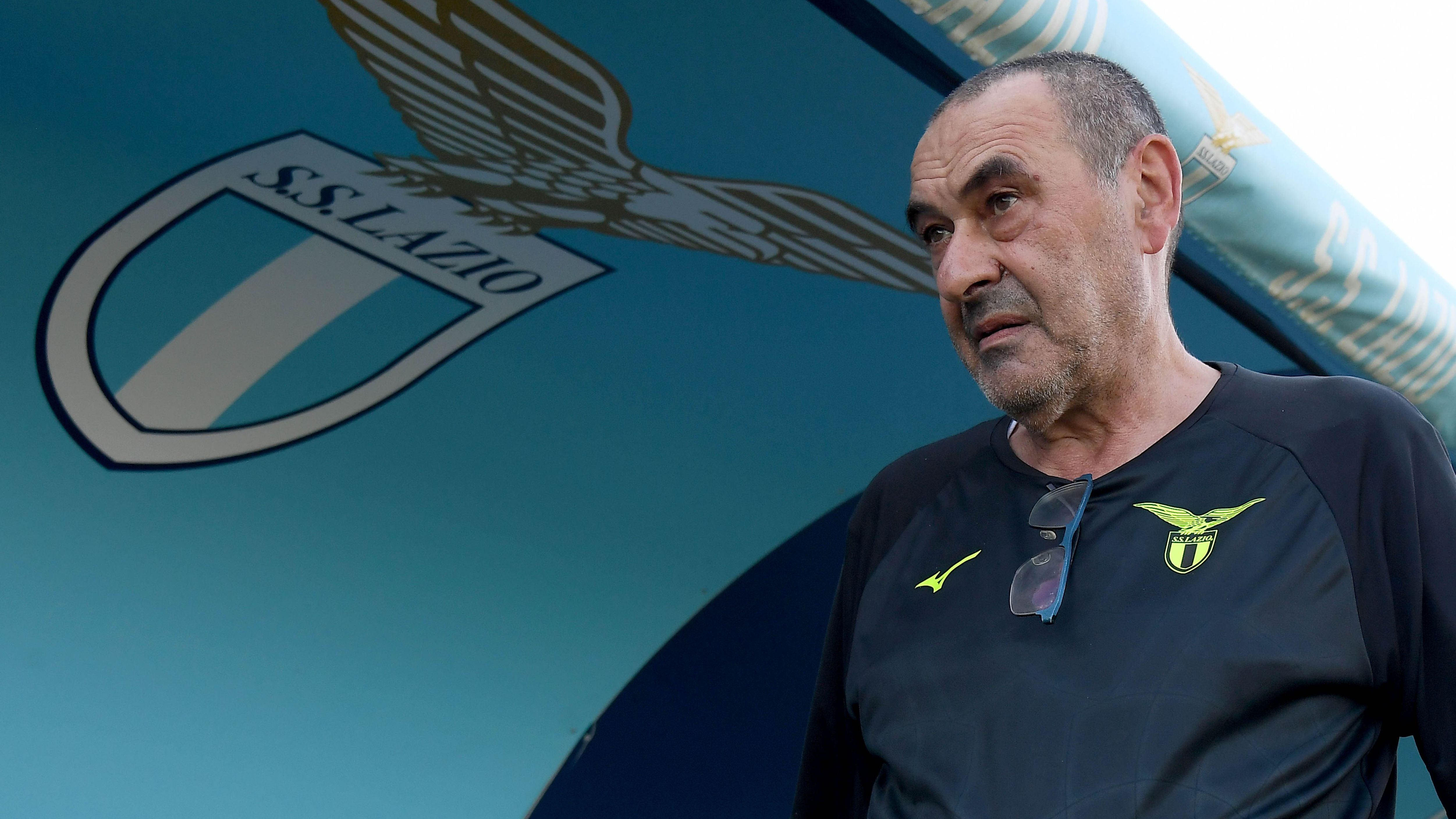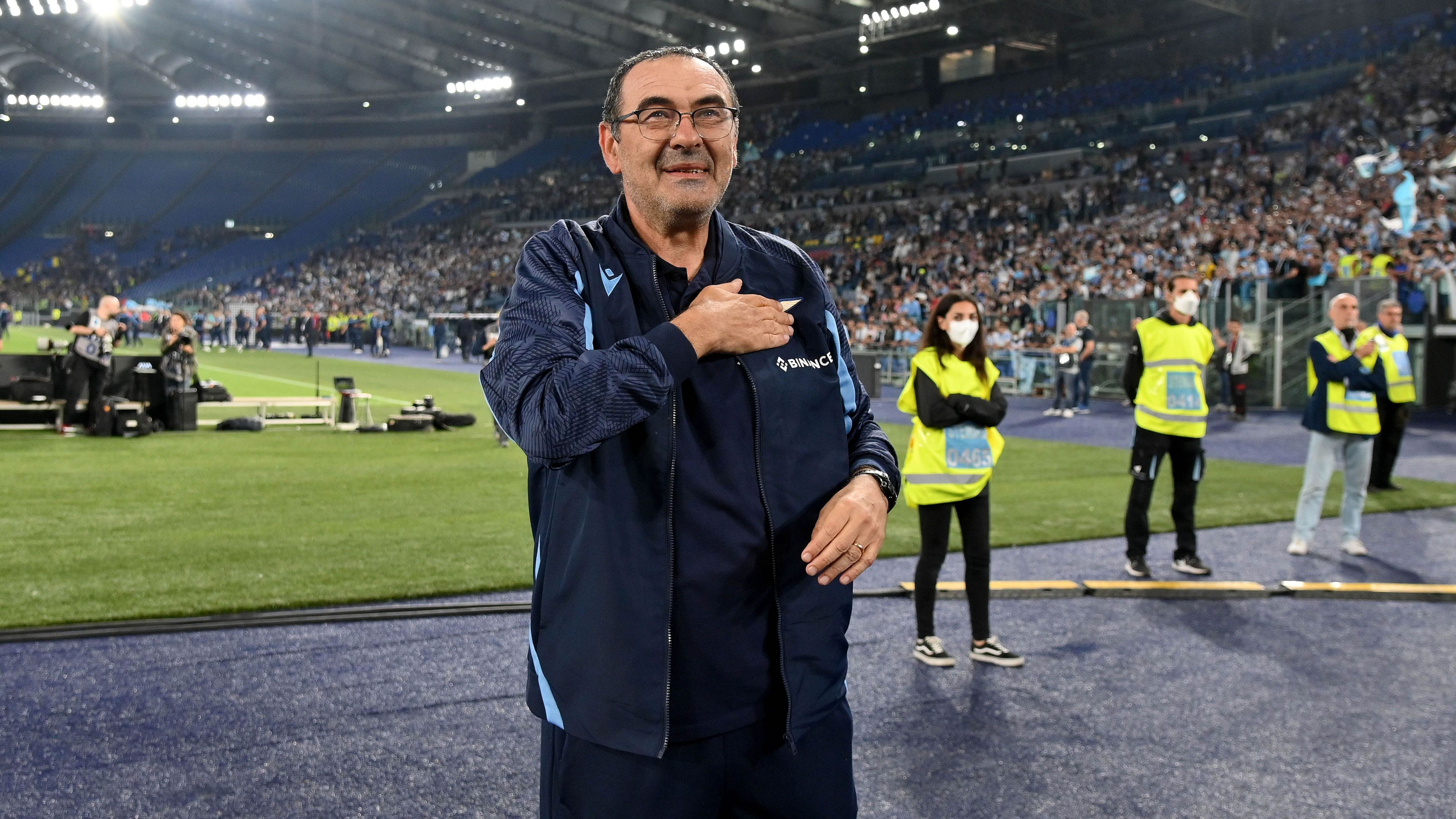Health Scare Shakes Lazio: Sarri’s Sudden Incident in Extreme Heat
In the intense summer conditions of Rome, where temperatures soared past 30°C, Maurizio Sarri, the esteemed coach of Lazio, experienced discomfort during a rigorous training session, leading to an immediate hospital visit for precautionary evaluations. The veteran leader, aged 66, was subsequently released and made his way back to the team’s facility in Formello, demonstrating resilience amid the challenges of the season’s preparation.
- Maurizio Sarri hospitalized following illness amid 30°C temperatures in Rome
- Lazio verifies coach’s stability and swift return to training activities on the same day
- Veteran manager, previously at Chelsea, has just recommitted to Lazio for a two-year tenure
 intense summer heat“>
intense summer heat“>

Sarri’s Experience Amid the Sweltering Conditions
During an outdoor practice for Lazio under the oppressive heat exceeding 30°C, Maurizio Sarri began to feel off-balance, prompting a quick transfer to medical care for a detailed assessment. After the examination, the seasoned coach was permitted to leave and promptly rejoined the squad at their base in Formello, maintaining the flow of team activities without significant interruption.
Official Response from the Club
Lazio issued an official update on Sarri’s condition, stating: “The coach has made his way back to Formello and, per the planned schedule, will oversee the evening practice starting at 6:00 PM without any changes.” They added that earlier in the day, he received an in-depth health evaluation that went beyond the standard checks given to the players at the facility.
A Look at Sarri’s Coaching Journey
Known for his innovative strategies and quirky personal style, Maurizio Sarri has carved out a notable path in football management. He guided Chelsea through a single campaign, clinching the Europa League title and securing a third-place finish in the Premier League standings. Following that, he took the reins at Juventus, paused for personal breaks on two occasions, and recently stepped back into his role with Lazio just last month, continuing to be a revered name in Italian soccer circles.
Upcoming Plans and Health Oversight for Lazio
Monitoring the Coach’s Well-Being
As pre-season progresses, Lazio intends to keep a close eye on Sarri’s physical state, particularly with the summer’s high temperatures in play. The prominent Serie A team is preparing to adjust the demands on their experienced leader to ensure his health remains a priority. With everything on track, Sarri is poised to steer Lazio through the forthcoming Serie A season as originally intended.
The Incident: A Health Scare for a Former Chelsea Manager
Background on the Manager and Chelsea’s Legacy
When it comes to iconic figures in football, former Chelsea managers have left an indelible mark on the sport, with their strategic brilliance and intense training regimens often making headlines. In this case, the hospitalization of a former Chelsea manager during a training session highlights the physical demands placed on coaches, especially amid intense summer heat. Such events underscore the importance of health monitoring for individuals who have spent years shaping teams like Chelsea, known for their rich history of successes and squad depth.
Football enthusiasts might recall how managers like those associated with Chelsea have pushed boundaries in player development and game tactics. For instance, the club’s storied past, filled with championship wins and player acquisitions, often involves rigorous training that can take a toll on anyone’s health. While specific details about the manager’s background aren’t directly tied to recent search results, it’s worth noting that Chelsea’s evolution as a powerhouse in English football has always been driven by visionary leaders who navigate the pressures of the game.
Details of the Health Issue During Training
The incident unfolded when the former Chelsea manager experienced a sudden health issue while overseeing a training session under the blazing summer sun. Intense summer heat can exacerbate existing conditions, leading to dehydration, heat exhaustion, or even heat stroke, which are common risks for those involved in outdoor sports activities. Reports suggest that the manager, who was likely engaged in hands-on coaching, felt symptoms such as dizziness or fatigue before requiring immediate medical attention.
This event serves as a stark reminder of the hidden dangers in football training environments. Factors like high temperatures, prolonged exposure, and the stress of maintaining peak performance can combine to create hazardous situations. For Chelsea fans and the broader football community, this hospitalization brings to light the need for better protocols, such as scheduled breaks and hydration stations, to protect everyone on the field.
Key factors contributing to the incident include:
- Prolonged exposure to heat: Sessions held during peak summer months can lead to rapid fluid loss, making it essential for managers and staff to monitor environmental conditions.
- Age and prior health history: Many former managers are in their later years, which might increase vulnerability to heat-related issues.
- Demanding training schedules: Chelsea’s reputation for intensive drills, as seen in their squad management, often requires full commitment, potentially overlooking personal health limits.
Health and Safety Measures in Football Training
To prevent similar occurrences, football clubs and managers must prioritize comprehensive health and safety protocols, especially during warmer months. Implementing these measures not only safeguards individuals but also enhances overall team performance and longevity in the sport.
Effective strategies include:
- Hydration and monitoring tools: Using wearable devices to track vital signs like heart rate and body temperature, which can alert staff to potential risks before they escalate.
- Scheduled rest periods: Incorporating mandatory breaks every 30-45 minutes in hot conditions to allow for cooling down and rehydration.
- Environmental assessments: Coaches should conduct pre-session checks on weather forecasts and field conditions, adapting plans as needed-for example, shifting indoor for extreme heat.
Additionally, under H3 subheadings, let’s break down specific recommendations:
Hydration Guidelines for Coaches and Players
Staying hydrated is crucial in intense summer heat, with experts recommending at least 500ml of water per hour during outdoor activities. Coaches, like those from Chelsea’s storied ranks, should lead by example, consuming electrolyte-rich drinks to maintain sodium levels and prevent cramps or dizziness.
Training Modifications for Hot Weather
When temperatures soar, modifying routines can make a big difference. For instance:
- Shorten session durations: Limit high-intensity drills to 60-90 minutes.
- Incorporate shade and cooling aids: Use tents, fans, or even ice vests to keep core body temperatures in check.
- Personalized health plans: Each individual, including former managers involved in training, should have a tailored plan that accounts for age, fitness level, and medical history.
The Role of Chelsea’s Community and Football in Promoting Wellness
Chelsea’s influence extends beyond the pitch, often setting trends in player welfare and club operations. While the club’s successes and squad details have been well-documented, this incident highlights how football organizations can evolve to address health challenges. For example, integrating wellness programs could involve partnerships with medical experts to conduct regular health screenings for all staff.
Broader implications for the football world include:
- Advocacy for policy changes: Leagues might introduce mandatory heat safety guidelines, similar to those in other high-risk sports.
- Educational campaigns: Raising awareness about symptoms of heat-related illnesses through Chelsea’s platforms could reach millions of fans.
- Long-term support for managers: Post-hospitalization, offering rehabilitation and mental health resources ensures a full recovery.
In discussions around former Chelsea managers, it’s evident that their contributions to football merit ongoing protection. By focusing on these aspects, clubs can foster a safer environment, ultimately benefiting everyone from players to coaching staff.
Impact on Training Practices and Future Precautions
Following such events, it’s imperative to review and enhance training protocols across football. For Chelsea and similar clubs, this means investing in advanced facilities like climate-controlled training grounds or AI-driven health monitoring systems. Statistics from sports health reports indicate that heat-related incidents have risen by 20% in recent years due to climate change, emphasizing the need for proactive measures.
Under this H3, specific steps for improvement include:
Upgrading Equipment and Facilities
- Equip training areas with automated weather stations that trigger alerts for excessive heat.
- Provide access to on-site medical teams trained in rapid response for heat emergencies.
Fostering a Culture of Health Awareness
- Encourage open dialogues about personal health among staff, using Chelsea’s legacy as a motivator.
- Bullet points for actionable tips:
- Always carry a personal water bottle and set hydration reminders.
- Wear lightweight, breathable clothing to reduce heat absorption.
- Educate teams on recognizing early signs, such as headaches or nausea, and responding promptly.
By addressing these elements, the football community can turn unfortunate incidents into opportunities for positive change, ensuring that managers and players thrive in any condition. This approach not only supports those at Chelsea but also sets a standard for global sports practices.
(Word count: 758)









